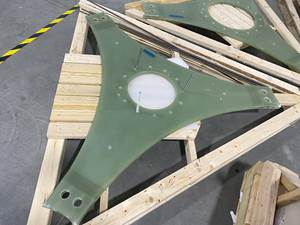Composites Technology February 2003 Editorial
Okay, 2002 was a tough year. At year's end, more prognosticators than I had ever dreamed possible were saying, "Don't ask me!" International stock markets have all gone wobbly and economic conditions around the world still seem to be on "hold" as I write. Yet, some of the composites industry's efforts are beginning
Okay, 2002 was a tough year. At year's end, more prognosticators than I had ever dreamed possible were saying, "Don't ask me!" International stock markets have all gone wobbly and economic conditions around the world still seem to be on "hold" as I write.
Yet, some of the composites industry's efforts are beginning to pay off and are offering a measure of protection against fluctuating markets that did not exist 10 years ago. Real improvements in materials, design and manufacturing technology have made this possible - we've come a long way from airplanes, boats and golf clubs as the only notable markets. And, more end users know about composites, today. We are succeeding in telling people how to make and use composite products. The number of markets that use a significant amount of composite materials has grown dramatically over the past few years. Just look at the articles in this issue.
The long-awaited growth in fiber-reinforced thermoplastics is upon us. The article on p. 20 discusses markets and applications for both glass mat thermoplastic (GMT) and injection-moldable long-fiber-filled pellets. These apps are now experiencing and expecting growth of more than 10 percent per year for the next 10 years. This growth is currently dependent upon automotive applications, which surely won't maintain current levels indefinitely (in the U.S., at least). But as the market backs away from huge SUVs and the U.S. Congress reconsiders mandated mileage requirements for both SUVs and pickups, these materials offer a great way to maintain performance while cutting weight. With new, lower-cost manufacturing methods - such as injection molding - look for reinforced thermoplastics to make significant inroads into industrial and consumer products, offering further market diversification.
In the article entitled Big Blades Cut Energy Costs (p. 28), a major European wind blade manufacturer discusses the economics and technical considerations in manufacturing ever-larger blades. The energy generated from wind blades is growing at 30-plus percent per year, representing around 200 million lb of glass and resin per year by the end of 2003. Composites are enabling materials in this application, and this international market, representing huge growth potential for composites, has virtually come from nothing within the last decade. Engineering Insights looks at the design of an all-composite chassis and trailer combination (a first, I believe) for trucks hauling heavy freight (p. 36). This award-winning vehicle is already on the road in Europe and a design modified for North America is being readied for market. Providing 15 percent more payload space on each trip, this new trailer makes economic sense in fuel savings alone.
Looking back at past editorials, it strikes me that in every issue of Composites Technology I write about the new products and technologies featured in its pages. These stories come from a very diverse group of end users - you, our readers. We work together in the belief that sharing sound technical information regarding the selection, design and manufacturing of composite materials will benefit everyone and grow our industry. Our editors strive to present your contributed information in the most professional and accurate way and trust your company benefits from the exposure, as well. Still, we realize that working with us on a story is a time-consuming commitment and an exacting process, and we thank you for your time and patience in getting it all down right. As our composites markets diversify and grow, we see that publishing good information is paying off for the industry; and with your help, we at CT are doing our part - one article at a time. Thanks.
Related Content
MingYang reveals 18-MW offshore wind turbine model with 140-meter-long blades
The Chinese wind turbine manufacturer surpasses its 16-MW platform, optimizes wind farm construction costs for 1-GW wind farms.
Read MoreHonda begins production of 2025 CR-V e:FCEV with Type 4 hydrogen tanks in U.S.
Model includes new technologies produced at Performance Manufacturing Center (PMC) in Marysville, Ohio, which is part of Honda hydrogen business strategy that includes Class 8 trucks.
Read MoreRTM, dry braided fabric enable faster, cost-effective manufacture for hydrokinetic turbine components
Switching from prepreg to RTM led to significant time and cost savings for the manufacture of fiberglass struts and complex carbon fiber composite foils that power ORPC’s RivGen systems.
Read MoreJEC World 2023 highlights: Recyclable resins, renewable energy solutions, award-winning automotive
CW technical editor Hannah Mason recaps some of the technology on display at JEC World, including natural, bio-based or recyclable materials solutions, innovative automotive and renewable energy components and more.
Read MoreRead Next
VIDEO: High-volume processing for fiberglass components
Cannon Ergos, a company specializing in high-ton presses and equipment for composites fabrication and plastics processing, displayed automotive and industrial components at CAMX 2024.
Read More“Structured air” TPS safeguards composite structures
Powered by an 85% air/15% pure polyimide aerogel, Blueshift’s novel material system protects structures during transient thermal events from -200°C to beyond 2400°C for rockets, battery boxes and more.
Read MoreDeveloping bonded composite repair for ships, offshore units
Bureau Veritas and industry partners issue guidelines and pave the way for certification via StrengthBond Offshore project.
Read More











.jpg;maxWidth=300;quality=90)









